Growing watermelons on a large scale have the potential to provide enormous financial returns. Watermelon is also rather simple to cultivate than summer crops like cucumber. In this article, we will learn about a farmer who cultivated watermelons on his farm and made a significant amount of money due to his efforts. Below we will see the details about Mr. Venkayya’s watermelon farm, his experiences in cultivating the watermelon crops, cultivation details of watermelon crops, and also the investment and profits involved in watermelon cultivation.
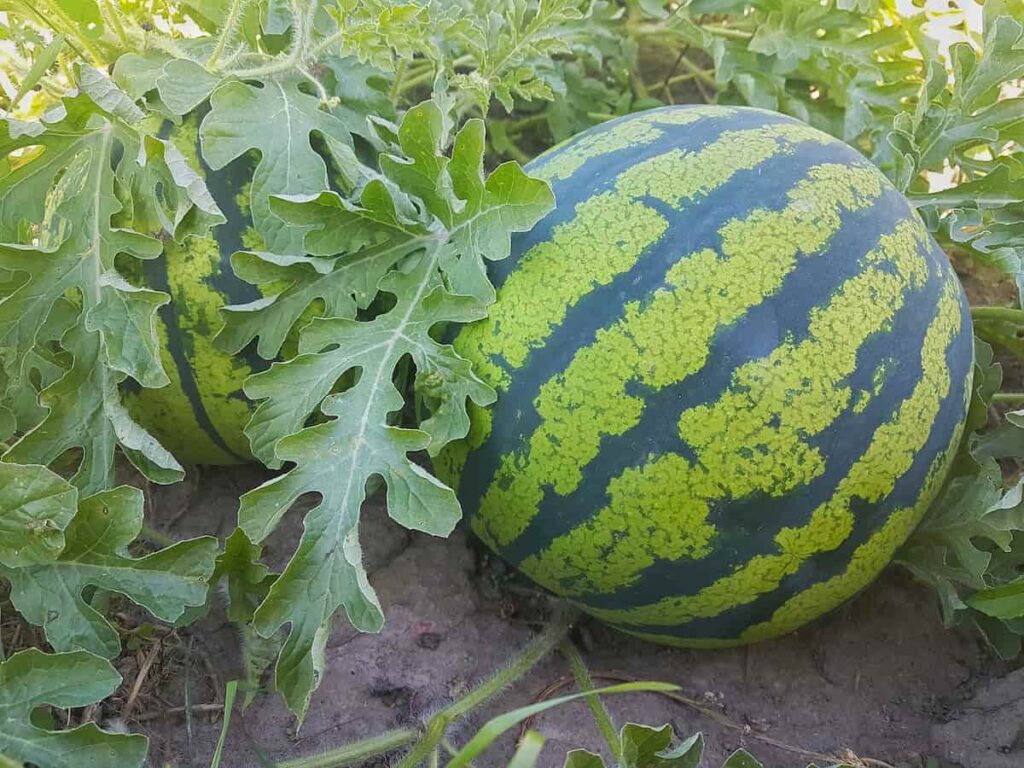
How this farmer earning 6 lakhs from 2 acres watermelon farm
Which month is watermelon grown in India?
Watermelons are best seeded during November and January in the northern, eastern, and western parts of India. These are cultivated virtually year-round in southern and central India, with mild and short winters. Seeds are steeped in tepid water for 12 hours before planting. The seeds are stored in a moist gunny bag overnight, with the water drained. The germination rate improves after using this therapy. A typical seeding of a hectare of land requires 1.5–2 kg of seed. Several sowing methods have been used depending on the time of year, and the kind of farming practiced.
Is watermelon farming profitable in India?
Due to high yields per acre and rising consumer demand, watermelon is a lucrative crop for farmers. Farmers can make a minimum of INR 2–3 lakh in only 3 months by planting watermelons. Commercial and subsistence farmers can benefit from watermelon gardening because of its high profits and little maintenance.
Exporting the fruit to other nations and states is another profitable aspect of commercial watermelon growing. Watermelons last longer if they are still green. Also, if it doesn’t have any spots or patches, the most popular section of the plant may still be consumed for up to four weeks following harvest. That’s why growers can make a killing off watermelon exports.
In case you missed it: Earning 30 Lakh Rupees from the Pearl Farming Business: A Success Story of Pearl Farmer in India
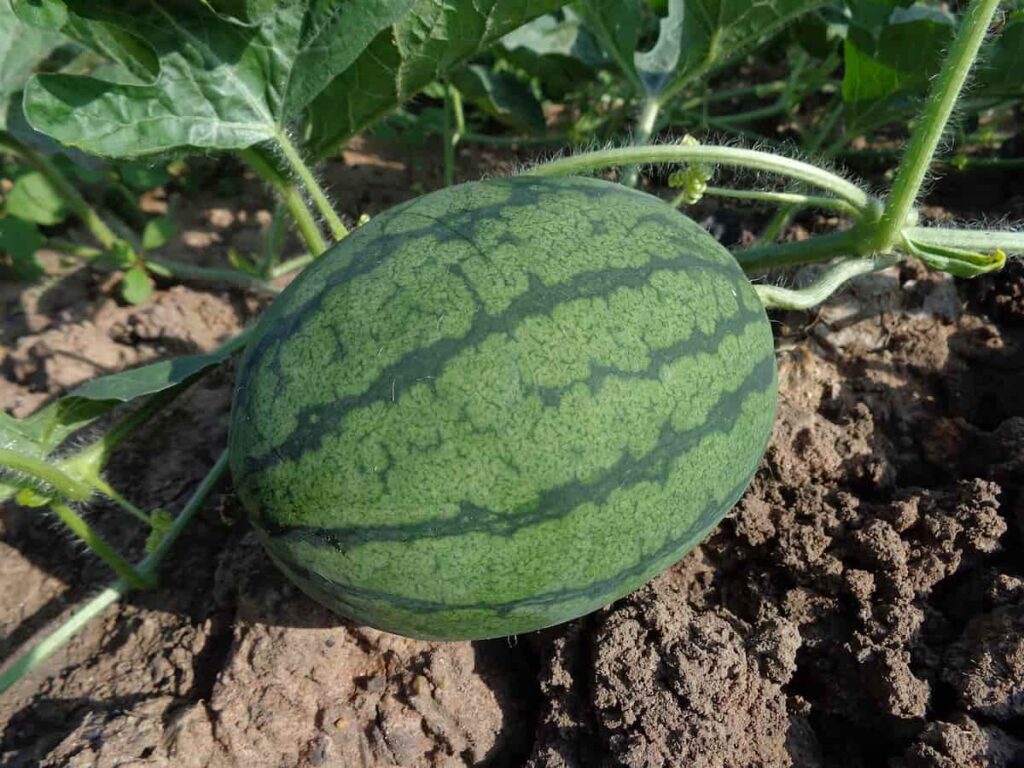
Do watermelons need a lot of water?
Watermelons need consistent watering during the early stages of their growth. However, the plant’s water needs gradually decrease when the fruit is set. Too much water makes them less delicious. When it comes to manufacturing, heated temperatures are required. They’re adaptable enough to flourish in wet and dry climates, provided the soil is moist.
What are the suitable climatic conditions for watermelons?
Watermelons can only flourish in hot weather. It can be cultivated year-round in states like Tamil Nadu, Orissa, West Bengal, Karnataka, Andhra Pradesh, and Rajasthan. However, it freezes easily. As a result, it can only be grown after the frost in locations like Haryana. These can only be cultivated without the risk of frost in greenhouses.
The plant bears fruit throughout summer and thrives in full light and low humidity. Grown in areas with harsh winters, they will need to be shielded from the elements. They are quite vulnerable to frost. Thus precautions must be taken to protect the crop. Watermelon seeds germinate and develop to their full potential in temperatures between 24 and 70 degrees Celsius. The fruit’s sugars would grow to their full potential after a night of chilly temperatures.
Watermelons can be grown year-round in India due to the country’s mostly tropical environment. On the other hand, watermelons are easily damaged by frost and other low-temperature conditions. In regions with harsh winters, watermelons are grown after the threat of frost has gone. Watermelons can be grown year-round in states like Tamil Nadu, Andhra Pradesh, Maharashtra, etc.
Watermelons like well-drained, sandy loam soil. It does just as well in sandy soil as in black soil. They can’t be water-repellent and must have a high organic content. The vines are susceptible to fungal diseases if the soil does not drain water well. Soil pH should be in the range of 6.0 to 7.5. The seeds would quickly die in acidic soil. Soil with a neutral pH is ideal, although it will also thrive in slightly alkaline soil.
In case you missed it: How to Start Recycling Business in California: Business Plan, Investment, Profit, License, and Requirements
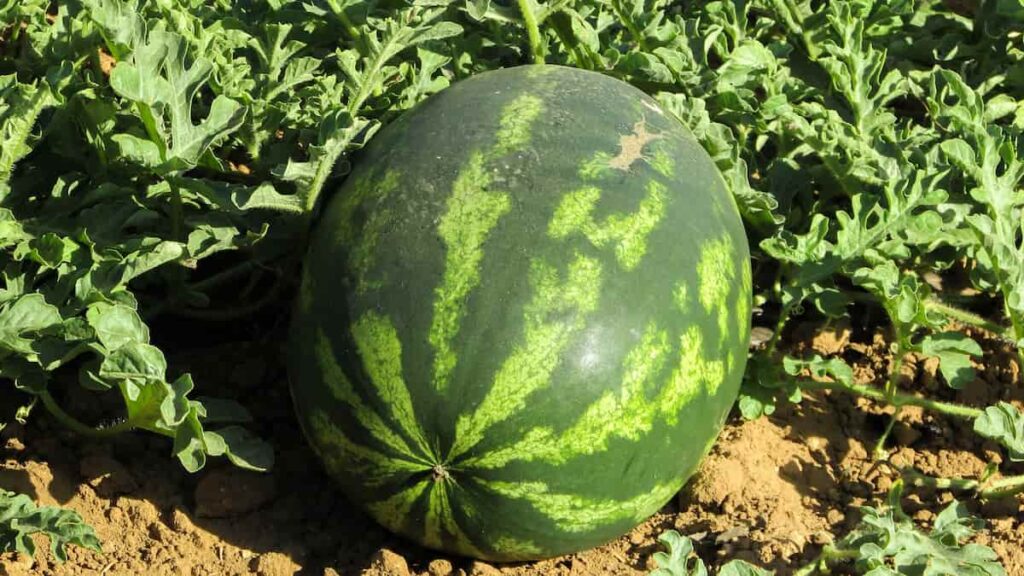
How do irrigate watermelon crops?
A watermelon field needs irrigation since the fruit grows best during the dry season. The watermelon beds are watered twice: once two days before planting and once again five days after the seeds have been planted. Weekly watering is performed as the plant develops. The risk of fruit breaking due to water stress during irrigation has to be carefully monitored. It’s important just to hydrate the plant’s roots while watering.
Avoiding soaking vines or other vegetative portions is particularly important during blooming and fruiting, as it may cause the flowers and fruits to wilt and the plant to die. Furthermore, soaking the vegetative portions might also result in the development of fungal illnesses. For plants to form a taproot system, moisture must be consistently supplied close to the ground. Watering frequency decreases as fruit maturity approach, and it is discontinued altogether after harvesting has begun. The fruit’s taste and sweetness benefit from this process.
How to fertilize watermelon plants?
Adding organic manure to the soil before planting improves the crop’s chances of survival and development. Growers can ensure consistent watermelon production by applying a compost layer midway through the growing season. Therefore, make sure there is enough organic matter in your soil.
Feeding early with a fertilizer with more nitrogen than potassium and phosphate can encourage healthy leaf and vine growth if you choose chemical fertilizer. However, the second application of low-nitrogen fertilizer that encourages blooming and fruiting should be made after the plant has flowered.
How to harvest watermelon plants?
It might be difficult to tell whether a fruit has reached maturity, but we have some tips to help you choose ripe watermelons. When the tendril of a watermelon turns yellow after coming into contact with the earth, it is ready to be picked. Avoid picking immature fruit at all costs. They are not very sweet or colorful. Melons, even uncut, have a two-week storage life.
In case you missed it: How to Open a Gas Station in Canada: Business Plan, Cost, Profit, Requirements, and License
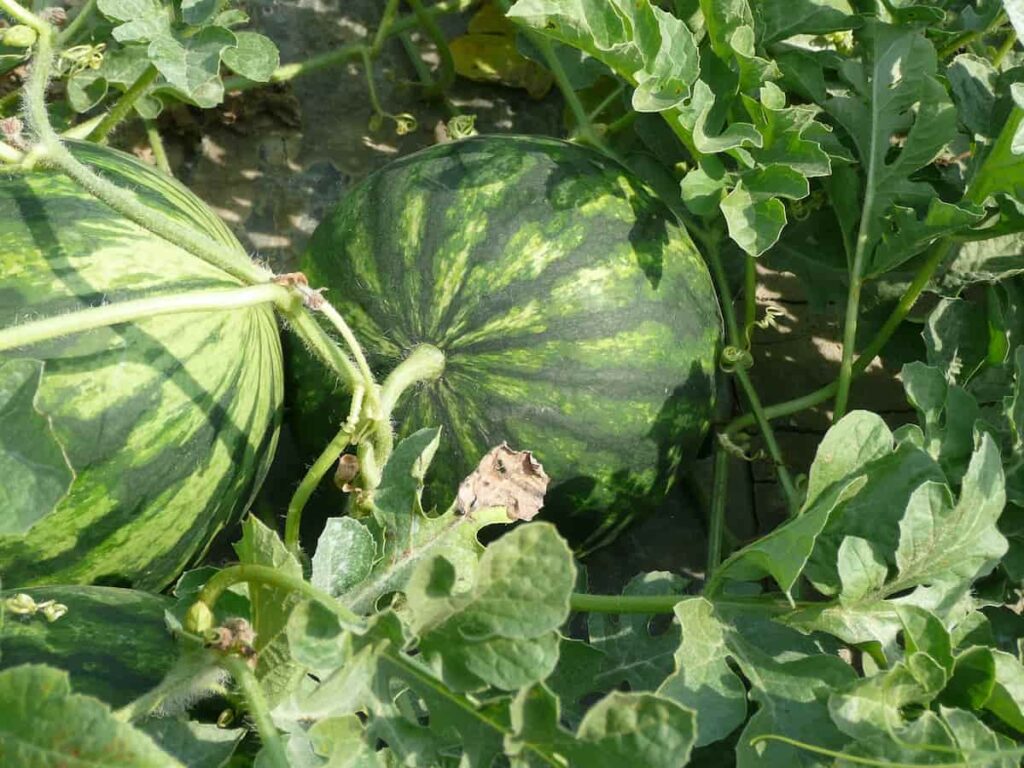
The success story of Mr. Venkayya
Mr. Venkayya is from Nalgonda district, Telangana. He owns 2.5 acres of land. In the past, he used to cultivate different vegetables on his land. Although the returns were good, he wanted to cultivate a more simple and commercial fruit crop. He then started investigating various fruit crops to cultivate. When he approached the government horticultural experts in his district regarding this matter, they suggested he grow a watermelon crop. This crop was new to him, so he started learning different techniques to grow watermelon crops.
When he realized it was a short-term crop, he was even happier as he experienced cultivating short-term crops. He realized that the watermelon demand would grow during the Shiva Rathri festival and during Ramzan times. As this was just 4 months away, he started cultivating watermelon. He then started his venture and earned huge profits from watermelon cultivation. Below we will see the details about Mr. Venkayya’s watermelon farm, his experiences in cultivating the watermelon crops, cultivation details of watermelon crops, and also the investment and profits involved in watermelon cultivation.
Cultivation details of watermelon crops, according to Mr. Venkayya
Watermelons can grow almost in any soil, but red soil is ideal for cultivation, says Mr. Venkayya. Also, one should have a reliable water resource for watermelon cultivation as these plants need a lot of water. For land cultivation, Mr. Venkayya says that one has to add chicken manure, animal manure, cow manure, compost, and neem cake if possible. Once you have added manure, the land should be plowed thoroughly. This will help in the proper mixing of manures with the soil.
After this, you have to decide on the spacing and prepare rows. On his farm, he spaced the seeds at a distance of 2 feet between each seed. It took him nearly 16 packets of seeds for his whole 2.5-acre farm. It took him nearly 26,000 rupees to buy seeds, says Mr. Venkayya. Once the rows are prepared, you must apply for certain medicines on the rows. These medicines will prevent any future virus attacks. Once you finish adding medicines, you have to cover rows with mulching covers.
Mulching covers are very crucial for watermelon cultivation. Mulching covers will prevent weeds from growing near the roots of the crops. Mulching covers also don’t let the water evaporate fast into the air. These preserve the soil water content near the crop’s roots, aiding in faster germination and better growth. It took him nearly 14 bundles of mulching cover for his 2.5 acres of the farm. Each mulching bundle cost him nearly 1400 rupees, says Mr. Venkayya.
After mulching covers are installed, one has to put holes in them every 2 feet on each row. Then you have to sow seeds in these holes. Before mulching, a drip irrigation system should also be installed over the rows. The drip irrigation system is ideal for watermelon cultivation as it promotes effective watering and less water wastage. As watermelon crops are highly water-consuming, drip irrigation is necessary, says Mr. Venkayya.
In case you missed it: How to Open a Gas Station in South Africa: Business Plan, Cost, Profit, Requirements, and License
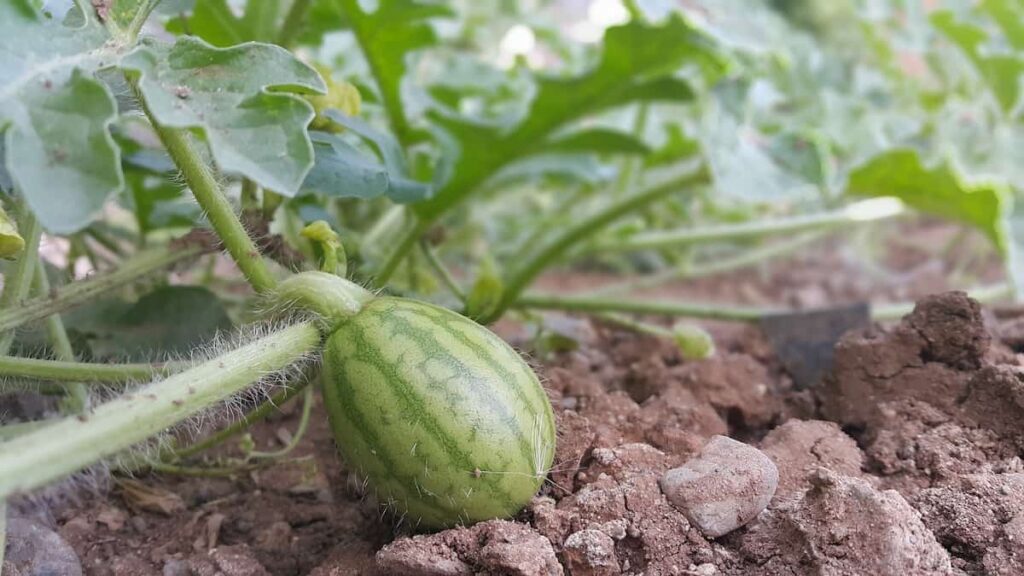
After sowing, the plants should be watered by drippers. He said you must make the whole row wet by using drippers. You can observe seed germination within 5 to 7 days. Mr. Venkayya got a 50% subsidy on his drip system. He says that many people don’t know this and will completely spend from their pocket. Mr. Venkayya advises farmers to use subsidies for drip irrigation systems.
After germination, you must provide plants with certain insecticides to control pests at the starting stage. One has to start using pesticides and insecticides to withstand various pests such as fruitflies, thrips, aphids, and diseases such as powdery mildew and leaf miner. Flowering starts from the 25th day onwards. From the 25th day onwards, you must give your crops various fertilizers to control Boron deficiency, Magnesium deficiency, Zinc deficiency, and Iron deficiency.
The fertilization is done by the fertigation method. The Fertigation method involves providing liquid fertilizers to crops via drip lines. All the fertilizers in Mr. Venkayya’s farms are done by the fertigation method. All the fertilizer applications should be made by the 40th day, says Mr. Venkayya. Watermelon cultivation involves a medium labor involvement.
You will need laborers for land preparation, mulching, seeding, harvesting, and, if necessary, weeding. This is also a significant investment, says Mr. Venkayya. The cropping period of watermelon is 65 to 70 days. After 65 to 70 days, one can start harvesting their watermelons. Mr. Venkayya expects a minimum harvest of nearly 80 tons from his 2-acre farm.
In case you missed it: Bamboo Straw Business Plan: Manufacturing Process, Investment, Profit, and Machine Cost
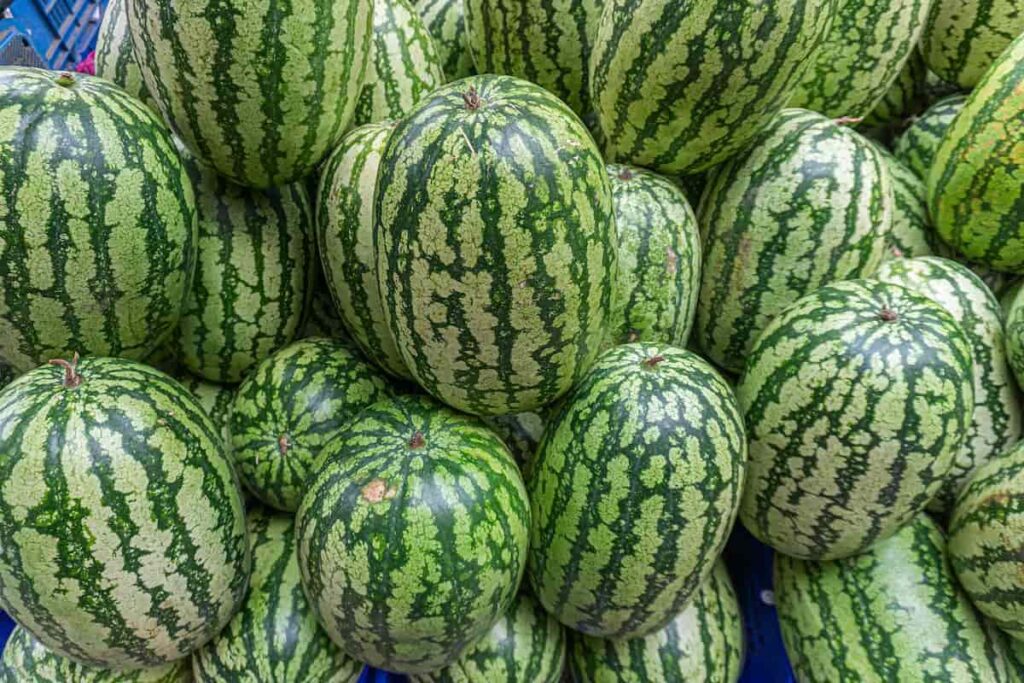
Investment and profit analysis of Mr. Venkayya’s watermelon farm
Mr. Venkayya says it took him nearly 1.5 lakh rupees as an investment for his 2 acres of watermelon farm. Regarding income, as mentioned above, he is expecting a harvest of nearly 80 tons and sells his harvest in the Kothapet fruit market, Hyderabad, at 9 rupees per kg. This means his income from his whole 2-acre watermelon farm is nearly 7,20,000 rupees.
Now, if we erase his investment from his income, he gets nearly 5,70,000 rupees as a profit. This is huge for a farmer who cultivates on 2.5 acres of land. In this way, Mr. Venkayya is earning huge profits from his watermelon farm and is now thinking of expanding his watermelon farm next year. He is happy and satisfied with watermelon cultivation. He advises farmers to grow on-demand seasonal fruit crops to be financially stable and sound.
- Handicraft Making at Home: A Small Profitable Business Idea
- Pet-Tech Startups: Innovations for Animal Lovers
- Tech Repair Services: Meeting the Demand for Gadget Maintenance
- Maximizing Rewards: Smart Credit Card Habits for Cashback and Points
- Ultimate Guide to Making Money from Goat Milk Business
- How to Start an Agricultural Value Added Product Business
- Value-Added Business Ideas for Greenhouse: The Best Ways to Make Profits with Greenhouse Farming
- How to Make Profits with Organic Country Chicken: Best Strategies for Beginners
- 10 Value-added Business Ideas for Millets: Low-investment and Highly Profitable
- Why Cleaning Service Business Becoming More Profitable in Metro Cities in India
- 10 Best Businesses to Start in Ayodhya for Profits
- Top Drone Business Ideas in India: Unlocking Aerial Innovation & Opportunities
- Top 10 Service Businesses You Can Start with No Money
- Ultimate Guide to Starting a Home-Based Advertising Agency Business
- Starting a Nail Salon Near Your Location: Check List, Business Plan, Licensing, and Opening Instructions
- Construction Company Name Ideas: Guide to Create New Construction Company Names
- 8 Best Small Businesses to Start in Hyderabad: Low-Cost and Profitable
- 10 Best Small Businesses to Start in Massachusetts: Low-Cost and Profitable
- 10 Best Small Businesses to Start in Maryland: Low-Investment and Profitable
- 10 Best Small Businesses to Start in Delaware: Low-Investment and Profitable
- 10 Best Small Businesses to Start in Connecticut: Low-Investment and Profitable
- Top 10 Best Online Pet Business Ideas: Exploring Cats to Dogs
- 10 Best Small Businesses to Start in Colorado: Low-Investment and Profitable
- Top 10 Profitable Small Business Ideas in California: Low-Investment Tips
- From Little Rock to Fayetteville: Top 10 Profitable Small Business Ideas in Arkansas
- Top 10 Profitable Small Business Ideas in Alabama: Discover Opportunities in Alabama’s Growing Cities
- Top 10 Profitable Small Business Ideas in Arizona: Discover Opportunities in Arizona’s Growing Cities
- Golf Business Ideas: Exploring Golf Course Money Making Ideas
- Low Capital Profitable Small Farm Ideas: Farming Ideas to Make Money
- How to Write a Business Plan for Daycare: Exploring from Financial Projections to Risk Management
- Home Daycare License Requirements: Exploring State-wise In-home Daycare Requirements
- How Profitable is Day Care Business: How Much Does a Daycare Owner Make a Month or Year?
- How to Open a Daycare Center in Toronto, Canada: Business Plan, Licenses and Permits
- How to Start Meal Prep and Delivery Services: A Popular Business Idea
- How to Start a Milk Chilling Plant Business
- How to Start Coconut Shell Charcoal Business: Business Plan for Maximizing Profits